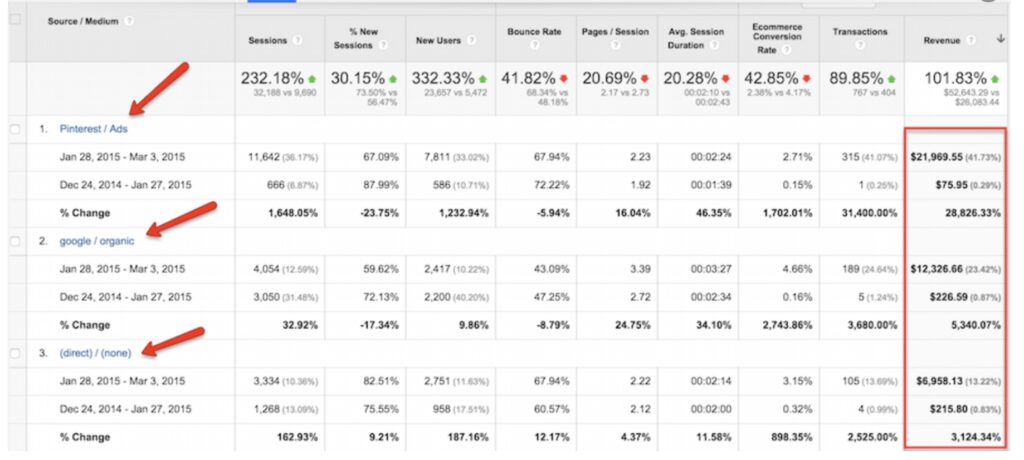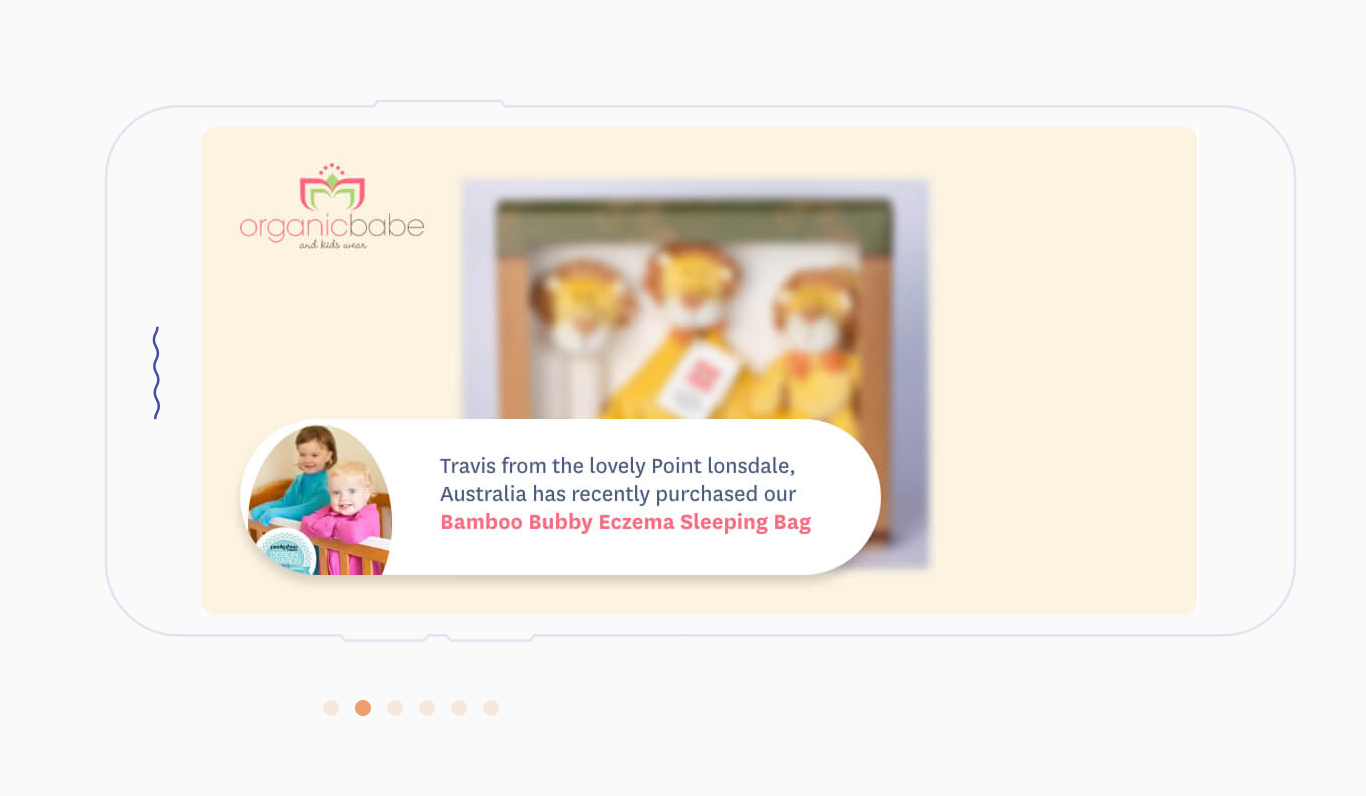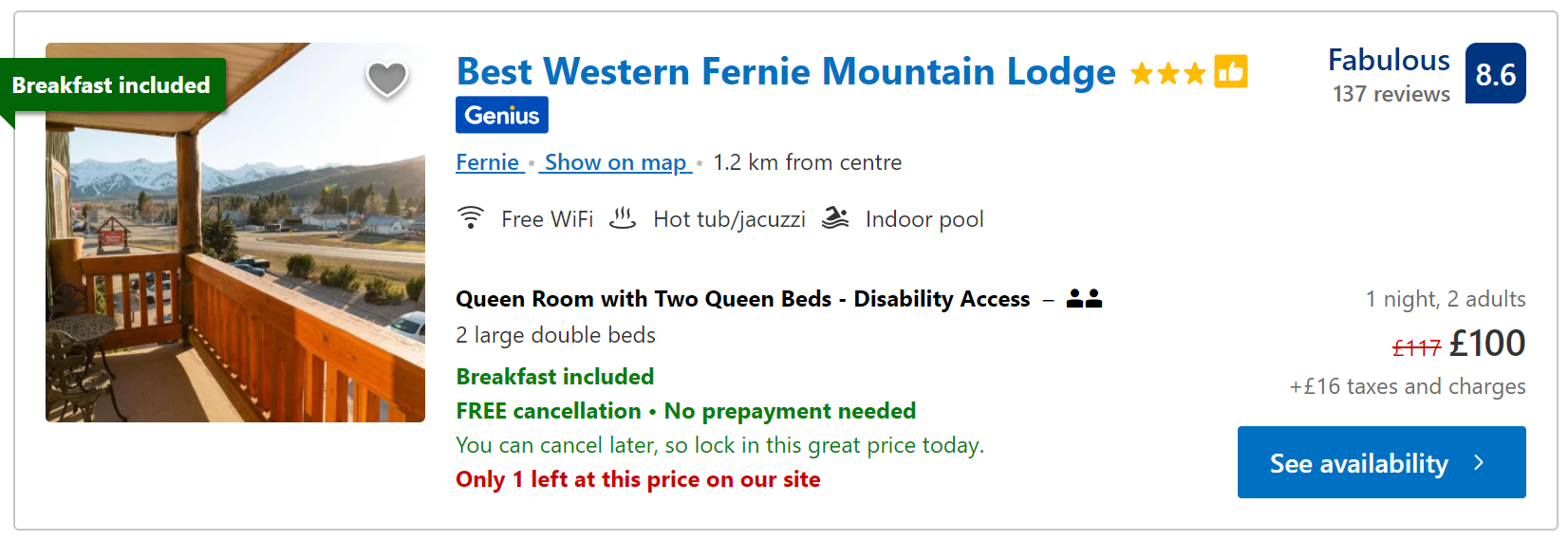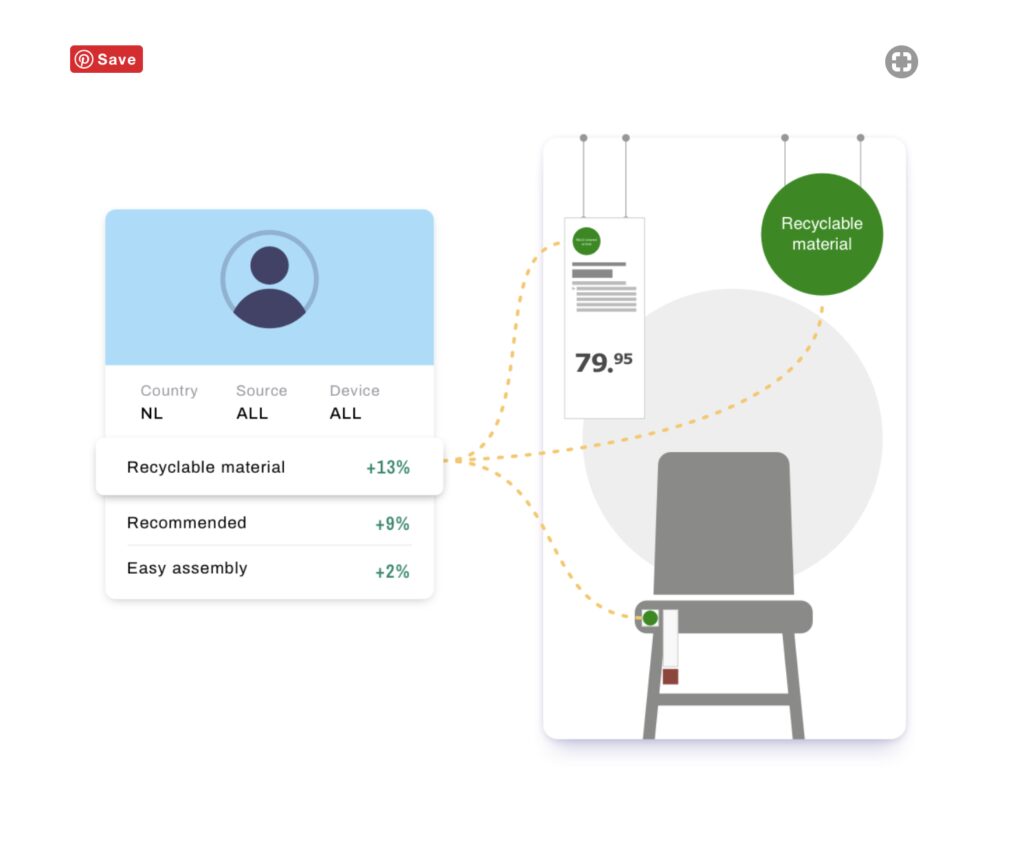Looking to grow your eCommerce brand? You’re in the right place! Take a look at these 34 lessons from eCommerce Expert Alexander Skibinskiy. Some of the strategies are quick to implement but others may require more resources. Begin with the quick wins and work your way towards full optimization.
1. Tailor Your Ecommerce Advertising Channels
Certain advertising channels may perform better than others for your brand. Sometimes one advertising channel may even perform better for a specific product. When launching a new brand or product test your ads on different channels and see which resonates with your audience. This will help you to optimize your conversion rates and customer acquisition costs.

Sometimes one channel can have a lower conversion rate but better customer acquisition cost. Pay attention to this metric as well.
Alex Skibinskiy
2. Know Your Marketing Objective, Every Ecommerce Certified Specialist must tell you this
Be mindful of your marketing objective. If your goal is to increase sales then a brand awareness campaign may waste more money than it generates. Traffic and engagement targets also may not lead to a high conversion rate. Instead, focus on your marketing objective.
All marketing channels have their own target traps. Focus on your objective, not meaningless metrics.

3. Choose Products and Formats Wisely
The products used in advertising have a large influence on conversion rates. In the example below three products of the same value are promoted in separate marketing campaigns. Despite the only difference being their design, each has a very different cost per result (CPR). This is why it is important to test products before using them in expensive eCommerce marketing campaigns.

Video advertisements may convert better than an image. While video reviews may convert better than video advertisements. Test as many formats as possible before committing to a large campaign.
Usually, I test as many products and visual formats as possible. Then I select best-performing products and visuals, and I focus all my advertising efforts on them.
Alex Skibinskiy
4. Segment Your Audience
You can improve your customer per customer acquisition (CPA) and conversion rate by targeting specific age groups. Designs perform differently based on the age of the audience, as seen in the example below:

5. Optimization By Time
Scheduling your ads to be shown at a specific time can help you to optimize your conversion rate and lower your CPA. In the example below, we get the lowest cost per customer between 1-2 AM and 5-6 AM.

6. Device Segmentation
You can segment your marketing campaign by device. This will allow you to get a better idea about the devices used by your customers and so which devices you must optimize your website for. Most B2C businesses focus on optimizing their site for mobiles, however, B2B companies should identify if their audience is mainly using desktops to pick and purchase their services.

7. Targeting Specific Audiences
Choose your target audience carefully. Don’t rely on your own judgement to choose who will buy your product. Test as many audiences as possible to achieve the best conversion rate and lowest CPA.

8. Phone Numbers
For eCommerce brands, building trust without the ability to meet a customer face-to-face can be difficult. Our eCommerce Expert encourages brands to provide the opportunity to shop over the phone. This is because people want to build a relationship first before buying an item.
An easily accessible phone number is a symbol of trust that improves brand credibility. Reputable and established brands like PIAGET feature their phone number on the top of the page and below the ‘add to bag’ button.

9. Social Proof Widgets
Another way of building trust and credibility as an eCommerce business is to use social proof, signs that other customers have enjoyed your product. These could be testimonials or customer reviews. FOMO.com allows you to add and analyze the effectiveness of social proof widgets like the one below.

10. Fear Of Missing Out (FOMO)
Humans are social creatures and hate to feel like they’re missing out. Businesses can play on this by highlighting product scarcity. Booking.com always uses this technique as it has been effective at boosting conversion rates.

11. Time-Sensitive Offers
Drive visitors toward purchases by using limited-time offers. In a bid to avoid missing out, customers are likely to make quicker decisions and buy more. You can substantially increase your conversion rate by combining social proof widgets, time-sensitive offers and FOMO.
12. Photo Reviews
Modern eCommerce brands need to evolve to maximize the opportunities digital technology provides. The market is changing, so adapt yourself to new forms of advertising, from photo and video reviews to Youtube adverts and influencer relationships. Photo and video reviews are much more engaging than simple text reviews and will lead to higher conversions.
13. Trust Elements
Our eCommerce Expert, Alexander Skibinskiy states that eCommerce brands can’t display enough trust elements. Any element that encourages trust should be displayed on your site, especially ones regarding payment, shipping, and guarantees. They should be everywhere, even in your advertising campaigns. Fear stops people from buying things online. Ask yourself ‘what fears do my customer have?’. Calm those fears with trust elements.
The PayPal brand name is a sure way to make customers relax about paying for your products online.
14. Microcopy and Product Tags
If you are getting a high volume of traffic, our eCommerce Expert highly recommends that you use an AI software called www.crobox.com. Their artificial intelligence tests microcopy and tags to boost conversion rates.
15. Photo Model’s Emotions
When it comes to eCommerce, every element of your site must be optimized. Even the emotions of models in your imagery influence conversion rates. In general, positive perform better, but you also can test different positive emotions to see which one performs the best.

Read more here: http://www.conversionvoodoo.com/blog/2011/09/eye-tracking-studies-will-kill-conversions-on-your-landing-page-optimizationtests/
16. Large Photo Products
People buy a lifestyle, not just a product. That’s why larger images where users can picture themselves with the product boost CPA and CRO.

17. Mobile-Optimized Experience and Vertical Photos
Most B2C brands must optimize their site for mobile, as only a small percentage of users still use desktop. Vertical images generally work better on mobile. They increase the conversion rates on mobile devices and don’t harm desktop traffic at all.
18. Use Product Videos
Video technology is now both affordable and accessible, so feature product videos on your website where you can. It brings eCommerce products to life and improves your search engine optimization. Our eCommerce Expert, Alexander Skibinskiy, recommends that you feature videos along with product pictures and note whether their introduction increases the sale of the product.

19. Ecoomerce Product Description
There is a saying in the world of sales—“Facts tell, but stories sell”. The meaning behind this saying is obvious – if you want a person to purchase your products or services, you have to tell them a story. This is never more important than in eCommerce.
Alex Skibinskiy
Showcase your product’s story in advertising, product titles, descriptions, blogs, vlogs, email communication, and customer support. The more you communicate, the higher your conversions. Every brand has its own values and style, and you must align your communications with them.
Our eCommerce Expert demonstrated this point with a quick experiment. He created an A/B test where the product page had either a short description or a longer “story-telling” description. The story took only ten minutes to produce but lead to the conversion rate increasing from 1% to 1.4%. So what are you waiting for? Start telling and testing stories!

20. Product Titles
In eCommerce, product names make a much greater impact than in traditional retail. Spend time developing appealing product titles and you’ll sell more.
In the example below, a product that could simply be called ‘pans’ is titled ‘Heritage The Rock Copper Essentials Non-Stick Cookset, 10pc). Each element on the title helps conjure an appealing image of the product. ‘Heritage’ suggests luxury. ‘Rock Copper’ suggests a classy and sophisticated appearance. ‘Essentials’ conveys the message that you need this product. While one of the pan’s main selling points, its ‘non-stick’ feature is also promoted in the title.
21. Product Delivery Time and Free Shipping
One of the main questions asked in communications with customers is ‘When will my order be delivered?’ By ensuring this question is answered on the min page you will increase your conversion rate and save your time responding to customers.
22. eCommerce Landing Page
Product page design itself can a problem. There are solutions to test different product page designs without developing a new design or waiting months for test results. eCommerce product page builders like Zipify or Clickfunnels, GemPage, can be used to test product page variations.
Sometimes even premade templates offered by these sites will convert better than your original product page.
Our eCommerce Expert, Alex Skibinskiy found that longer product pages with lots of details like reviews, stories, and social proofs convert better.
Make a long template, use the tactics described in this blog and boost your sales.
23. Exit-Intent Pop-Up
Exit-intent pop-ups help to capture customers that plan to leave your website and never come back. They increase conversion rates but also help to build customer email lists for email marketing purposes.
24. Optimize Checkout Pages
Many people abandon purchases at the checkout page. Solve this problem by encouraging FOMO with order reservation timers, building trust with “Secure Checkout” buttons, and utilizing social proof widgets. Money-back guarantees also help to increase purchases on the checkout page.

25. Make Payment Easy
Make payment easy by including several payment methods like Paypal, Split payments, Apple Pay, Credit Cart. By removing payment difficulties as a barrier to purchase, you’ll boost sales.

26. Live Chat
One downside to eCommerce is that customers can’t have face-to-face conversations about products with salespeople. People can call customer support but many are not comfortable making a call. Having a live chat is a great solution. It boosts sales and builds a better user experience.

27. Dynamic Remarketing
Dynamic remarketing helps to follow your website visitors on the web after they’ve left your site, and remind them of your product. This technology is worth investing in as it always leads to an increase in sales, CPA, and CR.

28. Remarketing Segmentation
Segment and test your remarketing. Which day, week or month performs better? You could save thousands if you identify that customers only make purchases during the first 30 days of remarketing.
Different offers may perform better in different parts of the segment. You may initially show no discount, then incrementally increase offers to tempt the most reluctant.
29. Blogging
Blogging and vlogging improve eCommerce conversions, and the dynamic content can be reused in other marketing channels. It’s also the most powerful tool to improve your SEO and get organic traffic. This type of traffic converts better than the paid ones, provided that your content is truly valuable. Even so, you must use it to keep your audiences engaged with the brand.
30. Automated Email Marketing Flows
To improve your CR and CPA eCommerce brands must use email marketing flows. eCommerce Experts often use professional solutions, like Klaviyo, that allow you to create an automated email series for each flow. You even can send emails based on customer behaviour.


31. Messenger Ads
You can boost sales by building your Messenger list. Messenger allows you to build flows, driving customers from ads to recart Messenger Flows. They even send follow-up messages for those who don’t purchase. A great tool for eCommerce Experts!

32. Add To Cart Page
Try eCommerce techniques to encourage people to add more items to their cart. Sticky Add To Cart bars help to move more people from Add to Cart to the Checkout. They should also improve marketing campaign performance.

33. Optimize Your Home Page
All eCommerce sites should prioritize their home page design. Showing offers on this page will help to optimize conversion rates. Many people visit the homepage, and if there is no offer it is hard to sell to new customers.
It’s important to note that the products that you promote on your home page will influence your conversion rate as well. Choose them wisely!

34. Marketing Structure
Finally ensure your marketing structure is tailored to eCommerce. If your business is experiencing inefficient marketing outcomes, it’s a sign that the marketing structure is lacking. Take a look at your marketing plan and see how you can include the elements identified in this blog.

Conclusion
For the best results you need to optimize both your eCommerce marketing plan and website. You must be motivated to improve every element of them both. It costs a lot, but it is worth every penny.
Use as many of the elements covered in this blog as you can. If each tip only increased your conversion rate by 1% (we expect it would increase by a lot more) you’d see an increase of over a third!
If you’d like a free consultation with our eCommerce Expert, Alexander Skibinskiy, get in touch.






Leave a Reply
You must be logged in to post a comment.